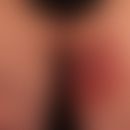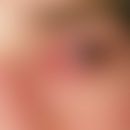Synonym(s)
HistoryThis section has been translated automatically.
DefinitionThis section has been translated automatically.
Rare, clinically defined, non-syndromic, hereditary or acquired clinical picture with dystrophy of several or all fingernails and/or toenails. Here, the nails are usually characterized by a rough, dull, sandpaper-like surface(trachyonychia). But also other variants of nail dystrophies with thickening and splitting of the nail plate can characterize this etiologically still little researched clinical picture.
You might also be interested in
Occurrence/EpidemiologyThis section has been translated automatically.
w>m
EtiopathogenesisThis section has been translated automatically.
Etiopathogenetically, 2 variants are distinguished:
- Acquired twenty-nail dystrophy, may occur isolated (idiopathic) to the nail organs. It can be, but also associated with underlying diseases such as lichen planus or alopecia areata. It is possible that acquired twenty-nail dystrophy may also occur as a minus variant of these diseases.
- Congenital (genetic) twenty-nail dystrophy. This syndrome is probably due to various genetic mutations (see below Congenital non-syndromic nail changes).
ManifestationThis section has been translated automatically.
Larger studies (n= 88) identified 2 manifestation peaks:
- Childhood
- Adulthood
HistologyThis section has been translated automatically.
Spongiosis of the nail matrix and nail bed (see Fig.), parakeratosis of the nails in some places.
TherapyThis section has been translated automatically.
In hereditary twenty-nail dystrophy, a causal therapy is not known.
In acquired trachyonychia occurring in the context of underlying diseases, the treatment of the underlying disease is the main focus; if necessary, glucocorticoids under occlusion (e.g., glucocorticoid tinctures such as betamethasone/clobetasol in alcohol-aqueous solution) (Sakiyama T et al. 2016). If therapy is resistant, the use of ciclosporin A may be an alternative.
Otherwise, increased care of the nail plate.
Note(s)This section has been translated automatically.
The clinically descriptive term"trachyonychia" is defined differently in the various publications. It is probably an etiologically different, reactive pathological keratinization pattern of the nail organ. Trachonychia may also be associated with various underlying diseases (e.g. psoriasis vulgaris/s.s. psoriasis of the nails), atopic dermatitis, lichen planus (see lichen planus of the nails), alopecia areata).
LiteratureThis section has been translated automatically.
- Alkiewicz J (1950) Trachyonychia. Ann Dermatol Venereol 10: 136-140.
- Bibb LA et al (2021) Simultaneous occurrence of idiopathic trachyonychia in dizygotic twins. Pediatr Dermatol 38:1586-1587.
- Brown-Falco O et al (1981) Trachyonychia: 20-nail dystrophy. Dermatologist 32: 17-22
- Chien P Jr et al (2008) Alopecia universalis with twenty-nail dystrophy (trachyonychia). Dermatol Online J 14:24
- Commens, C. A. Twenty-nail dystrophy in identical twins. Pediat. Derm. 5: 117-119, 1988
- Grover C et al (2003) Longitudinal nail biopsy: utility in 20-nail dystrophy. Dermatol Surg 29: 1125-1129.
- Khan S et al (2015) Genetics of human isolated hereditary nail disorders. Br J Dermatol 173:922-929.
- Lee YB et al (2012) Cyclosporine administration improves clinical manifestations and quality of life in patients with 20-nail dystrophy: case series and survey study. J Dermatol 39:1064-1065.
- Sakiyama T et al. (2016) Spongiotic trachyonychia Treated with Topical Corticosteroids Using the Paper Tape Occlusion Method. Skin Appendage Disord 2: 49-51.
- Sehgal VN (2007). Twenty nail dystrophy trachyonychia: an overview. J Dermatol 34:361-366.
- Wilson NJ et al. (2013) Recessive mutations in the gene encoding frizzled 6 cause twenty nail dystrophy--expanding the differential diagnosis for pachyonychia congenita. J Dermatol Sci 70: 58-60
- Yorulmaz A (2022). Idiopathic trachyonychia (twenty-nail dystrophy). J Cutan Med Surg 26:436.
Incoming links (10)
Alopecia areata unguium; Dystrophy, twenty nail dystrophy; Genetically caused non-syndromal nail abnormalities; Nail disorder, nonsyndromic congenital 1-10; Nail lichen planus ; Onychodystrophy (overview); Pachyonychia congenita; Psoriasis of the nails; Trachyonychia idiopathica; Twenty-nail childhood dystrophy;Outgoing links (14)
Alopecia areata (overview); Atopic dermatitis (overview); Ciclosporin a; Clobetasol-17-propionate; Glucocorticosteroids; Nail; Nail disorder, nonsyndromic congenital 1-10; Nail lichen planus ; Parakeratosis; Psoriasis of the nails; ... Show allDisclaimer
Please ask your physician for a reliable diagnosis. This website is only meant as a reference.











